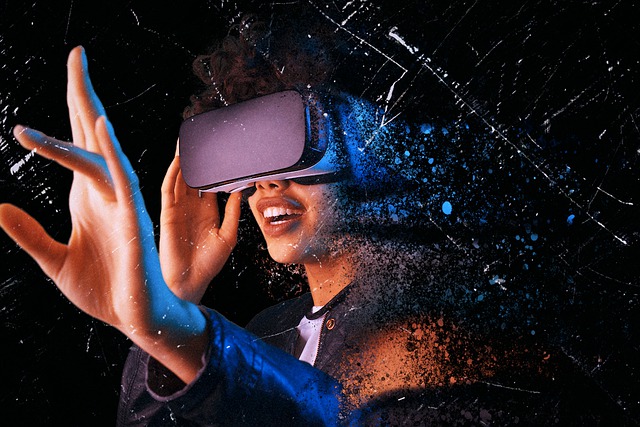Exploring the Boundless World of Virtual Reality and Augmented Reality
Virtual reality (VR) and augmented reality (AR) are two of the most groundbreaking technologies of our time.
Both VR and AR have the power to transform the way we live, work, and interact with the world around us.
In this blog, we’ll take a closer look at these technologies, explore how they work, and discuss their current and future applications.
What is Virtual Reality?
Virtual reality is a computer-generated simulation of a three-dimensional environment that can be explored and interacted with by a person using a headset and hand-held controllers.
In a VR environment, users are fully immersed in a digital world and can experience it as if they were actually there.
One of the key features of VR is its ability to create a sense of presence.
This means that users can interact with virtual objects and environments as if they were real, physical objects.
The headset and controllers are designed to track the user’s movements and provide a responsive, intuitive experience.
What is Augmented Reality?
Augmented reality is a technology that overlays digital information and images onto the real world.
This is done using devices such as smartphones, tablets, or AR glasses, which have a camera that captures the real-world environment.
The digital information is then displayed on the device’s screen, augmenting the user’s view of the real world.
AR can be used to display a range of information, from simple text and images to complex 3D models.
It also has the ability to interact with the real world, allowing users to manipulate virtual objects in real time.
Applications of Virtual Reality and Augmented Reality
Virtual reality and augmented reality have a wide range of potential applications, from entertainment and gaming to education, training, and healthcare.
Entertainment and Gaming
VR and AR have already made a big impact in the entertainment and gaming industries.
VR headsets like the Oculus Quest and PlayStation VR have become popular devices for gaming, allowing players to experience games in a whole new way.
AR games, like Pokémon Go and Harry Potter: Wizards Unite, have also gained a large following by allowing players to experience a digital world overlaid on the real world.
Education and Training
VR and AR have enormous potential to revolutionize education and training.
In a VR environment, students can explore digital simulations of real-world environments, allowing them to experience and interact with complex concepts in a safe and controlled setting.
AR can also be used to enhance learning experiences, for example by displaying interactive and informative annotations on real-world objects.
Healthcare
VR and AR have the potential to transform the healthcare industry, from surgical training to mental health therapy.
In the field of surgical training, VR simulations can provide a safe and controlled environment for trainee surgeons to practice procedures before performing them on real patients.
AR can also be used to display patient data and information during surgeries, helping to ensure that procedures are performed accurately and efficiently.
In the field of mental health, VR has been shown to be an effective tool for treating conditions such as anxiety and post-traumatic stress disorder (PTSD).
By exposing patients to controlled simulations of triggering environments, VR can help to desensitize them and reduce their symptoms.
Future of Virtual Reality and Augmented Reality
The future of VR and AR is incredibly exciting, with the potential to change the way we live, work, and interact with the world in ways we can’t yet imagine.
Advances in VR and AR technology are leading to smaller, more affordable devices with better graphics, making them accessible to a wider range of users.
As VR and AR become more prevalent, we can expect to see new and innovative applications emerge in various industries, including retail, tourism, and construction.
In retail, for example, AR can be used to provide customers with an interactive shopping experience, allowing them to try on clothes virtually before making a purchase.
In tourism, VR and AR can be used to create virtual tours and experiences, allowing people to explore destinations from the comfort of their own homes.
In construction, VR can be used to create virtual walkthroughs of buildings, allowing architects and builders to visualize their designs and make any necessary changes before construction begins.
Another important area of development for VR and AR is social interaction.
As these technologies become more advanced, we can expect to see the development of virtual and augmented reality social platforms, where people can interact with each other in digital environments.
Conclusion
Virtual reality and augmented reality have the power to transform the way we live, work, and interact with the world around us.
From gaming and entertainment to education, healthcare, and beyond, VR and AR are poised to have a huge impact on our daily lives.
As these technologies continue to evolve and improve, we can expect to see new and innovative applications emerge, changing the way we experience the world.
